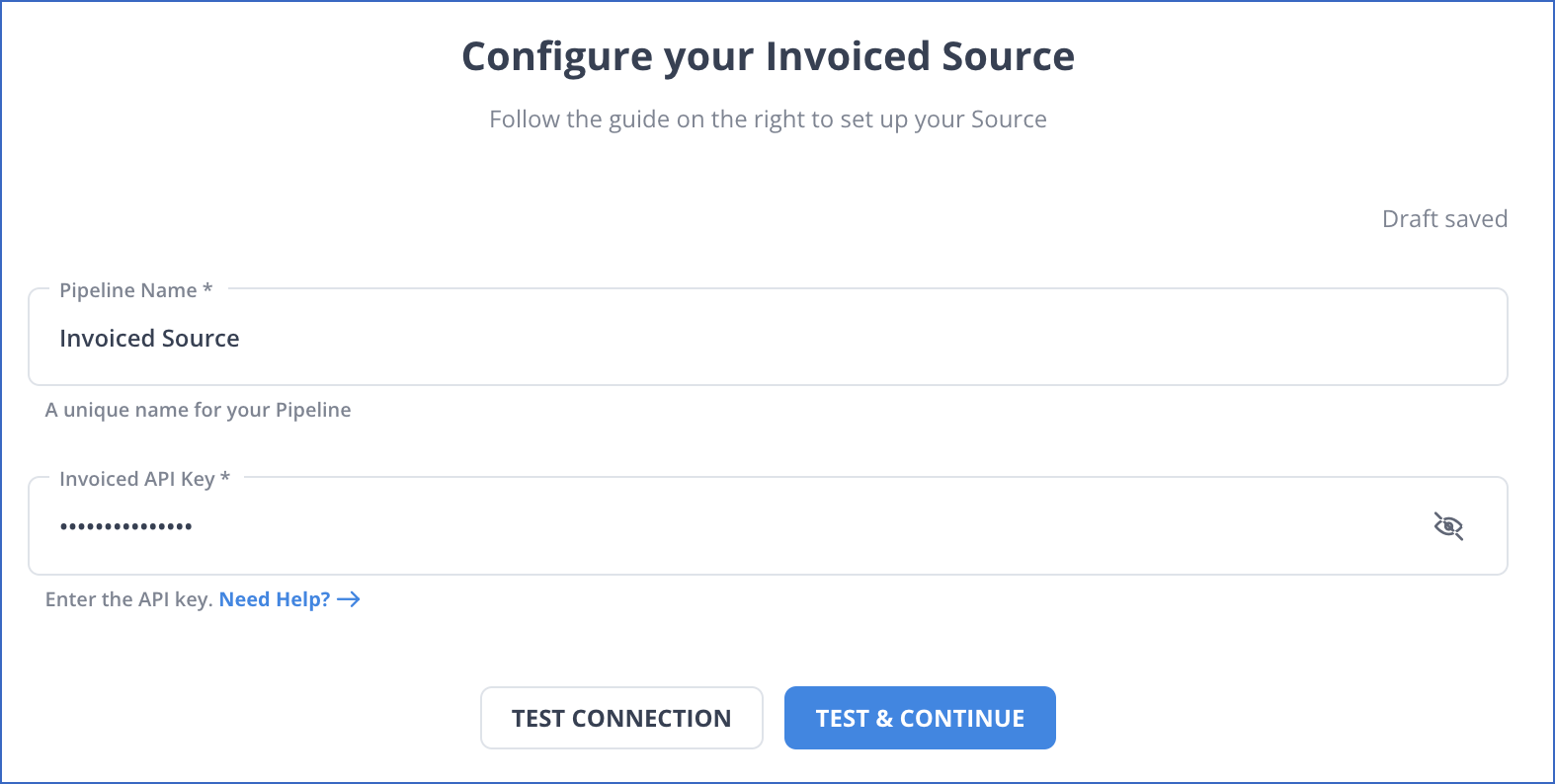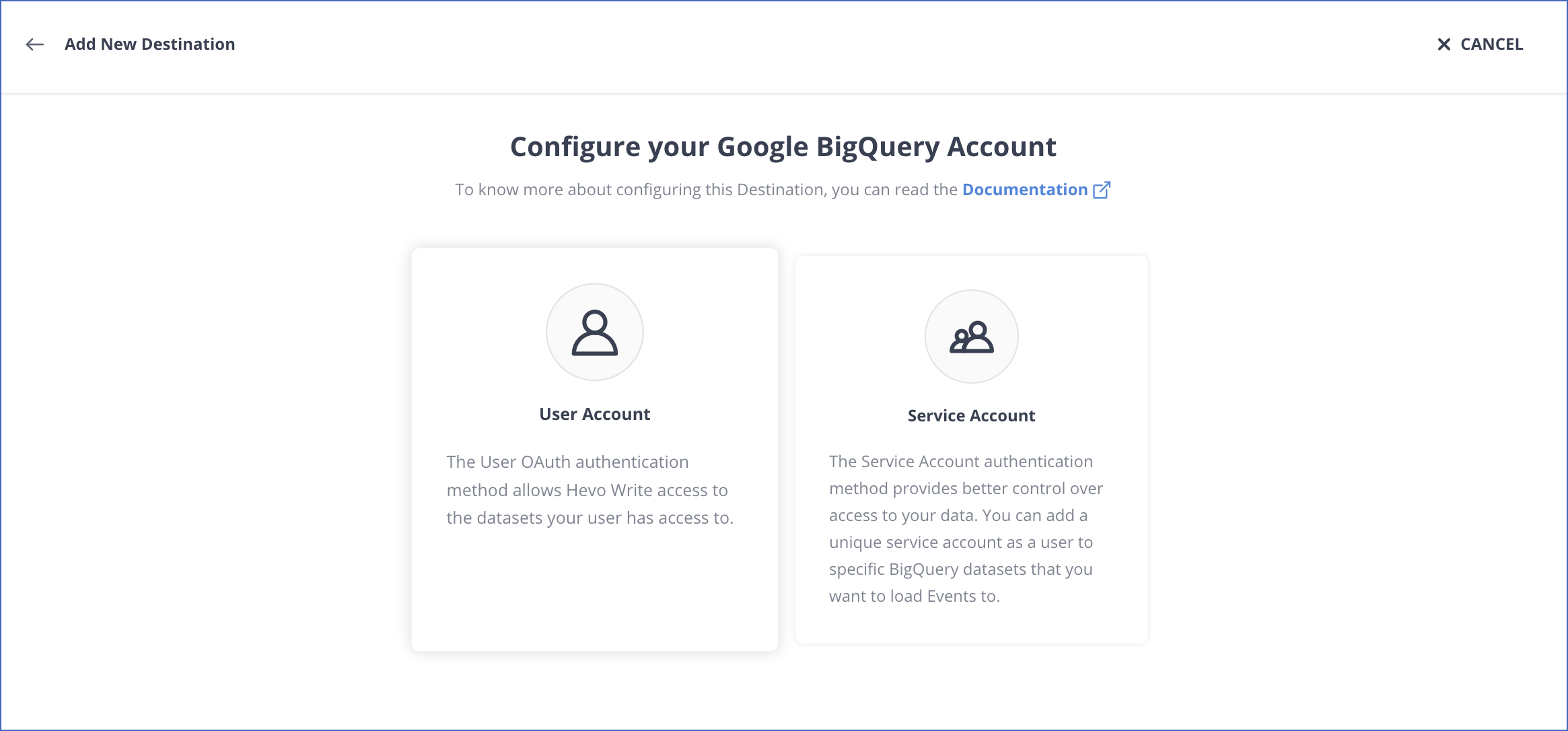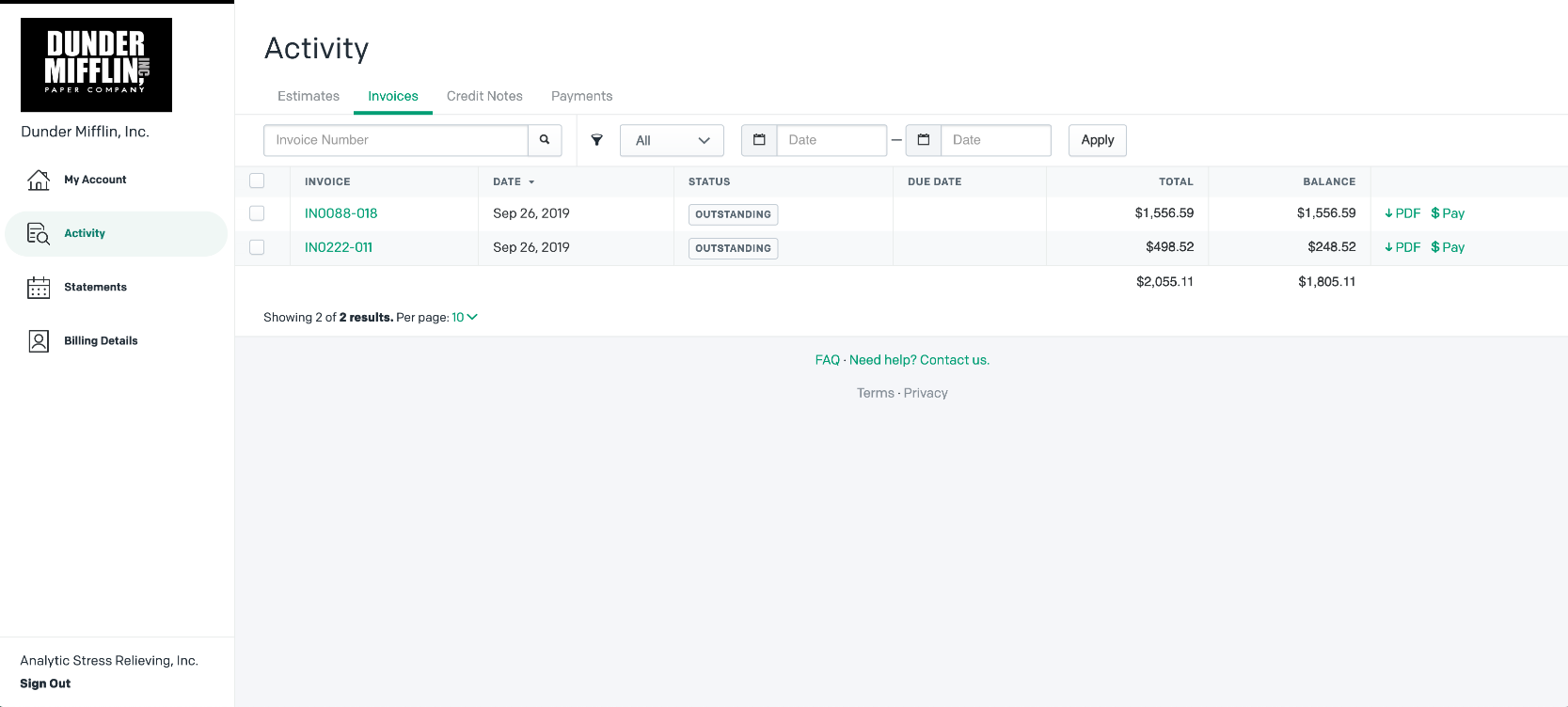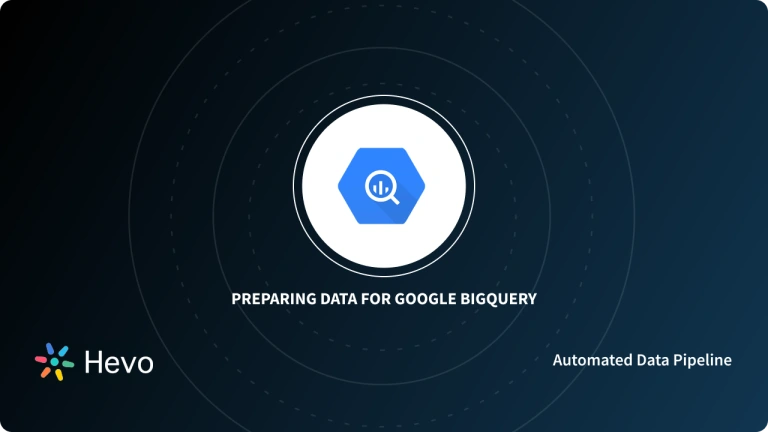Unlock the full potential of your Invoiced data by integrating it seamlessly with BigQuery. With Hevo’s automated pipeline, get data flowing effortlessly—watch our 1-minute demo below to see it in action!
There are several applications available to assist in creating invoices in the market. Previously, Excel and Word were used for their invoice templates. But with the advent of technology, there are softwares that automate your process of manually creating invoices, thus eliminating the need to enter every detail. One such billing software is Invoiced.
While Invoiced can help with billing woes, companies must still store all their data for analytics. Traditional data warehouses have been used until now, but they come with their own set of complications. This is why organizations are now opting for cloud-based data warehouses like Google BigQuery.
In this blog, you will walk through Invoiced and Google BigQuery and the need to connect Invoiced to BigQuery platforms for data migration.
Method 1: Using Hevo Data to Connect Invoiced to BigQuery
Hevo Data, an Automated Data Pipeline, provides you with a hassle-free solution to connect Invoiced to BigQuery within minutes with an easy-to-use no-code interface. Hevo is fully managed and completely automates the process of loading data from Invoiced to BigQuery and enriching the data and transforming it into an analysis-ready form without having to write a single line of code.
Method 2: Using Custom Code to Move Data from Invoiced to BigQuery
This method would be time-consuming and somewhat tedious to implement. Users will have to write custom codes to enable two processes, streaming data from Invoiced to BigQuery. This method is suitable for users with a technical background.
Get Started with Hevo for FreeTable of Contents
What is Invoiced?

Invoiced is a cloud-based account receivable automation program that automates collections and streamlines organizational payments. Invoiced can be a good alternative for automating routine procedures so your accounting team can focus on more work-intensive financial processes, regardless of the type of organization. Businesses could use the platform’s configurable features, which are ideal for high-volume billers who wish to simplify monthly invoicing. They may use the software to create billing plans, like installment payments, and send invoices through email or text messages ahead of time.
Key Features of Invoiced
- Integrations and API: Integrations and API: Invoiced integrates with major accounting software like Xero and QuickBooks, ensuring seamless data flow. It also supports REST API for building custom integrations.
- Subscription Billing: The platform simplifies subscription billing with plans including usage-based and variable pricing, along with advanced renewal options.
- Flexible Payment Plans: Invoiced supports multiple payment methods, including credit and debit cards, and allows customers to set up autopay, providing a modern, seamless payment experience.
What is Google BigQuery?
Google BigQuery is a cloud-based data warehouse designed for large-scale data analysis, capable of processing petabytes of data. It separates storage and query processing, allowing seamless integration with other Google services to enhance workflows. Based on Dremel, BigQuery uses Massively Parallel Processing (MPP), enabling it to query thousands of rows per second. Data is stored in distributed, replicated units and processed by Compute Clusters with Shared-Nothing Nodes, providing flexibility and scalability.
Key Features of Google BigQuery
- Flexible Scaling: Resources are automatically scaled based on workload, with storage extending to petabytes as needed. BigQuery is fully managed, handling patches, updates, and scaling.
- Storage: Data is stored in Google’s Colossus system, using the Capacitor format for optimized storage without performance impact.
- Programming Access: Access BigQuery via REST API, client libraries, or the GCP Console. Queries are ACID-compliant, ensuring data integrity.
- Federated Query: BigQuery allows direct querying of external databases like Bigtable or GCS through its Connection API, returning results as temporary tables.
Method 1: Using Hevo Data to Connect Invoiced to BigQuery
Using Hevo Data, you can connect Invoiced to BigQuery in the following 2 steps
Step 1: Configure Invoiced as the Source
- Step 1.1: In the Asset Palette, select PIPELINES.
- Step 1.2: In the Pipelines List View, click + CREATE.
- Step 1.3: Select “Invoiced” on the Select Source Type page.
- Step 1.4: Enter the following information on the Configure your Invoiced Source page:
- Pipeline Name: A distinct, 255-character-maximum name for the Pipeline.
- API Key: The API key that was retrieved from your Invoiced account.

- Step 1.5: Simply press TEST & CONTINUE.
- Step 1.6: Configure the data ingestion and establish the destination after that.
Step 2: Set up Google BigQuery as a destination in Hevo
- Step 2.1: In the Asset Palette, select DESTINATIONS.
- Step 2.2: In the Destinations List View, click + CREATE.
- Step 2.3: Select Google BigQuery from the Add Destination page.
- Step 2.4: Choose the BigQuery connection authentication method on the Configure your Google BigQuery Account page.

- Step 2.5: Choose one of these:
- Using a Service Account to connect:
- Service Account Key file, please attach.
- Note that Hevo only accepts key files in JSON format.
- Go to CONFIGURE GOOGLE BIGQUERY ACCOUNT and click it.
- Using a user account to connect:
- To add a Google BigQuery account, click +.
- Become a user with BigQuery Admin and Storage Admin permissions by logging in.
- To grant Hevo access to your data, click Allow.
- Using a Service Account to connect:
- Step 2.6: Set the following parameters on the Configure your Google BigQuery page:
- Destination Name: A unique name for your Destination.
- Project ID: The BigQuery Project ID that you were able to retrieve in Step 2 above and for which you had permitted the previous steps.
- Dataset ID: Name of the dataset that you want to sync your data to, as retrieved in Step 3 above.
- GCS Bucket: To upload files to BigQuery, they must first be staged in the cloud storage bucket that was retrieved in Step 4 above.
- Sanitize Table/Column Names: Activate this option to replace the spaces and non-alphanumeric characters in between the table and column names with underscores ( ). Name Sanitization is written.
Step 3: Test connectivity
Step 4: Save Destination
Here are more reasons to try Hevo:
- Smooth Schema Management: Hevo takes away the tedious task of schema management & automatically detects the schema of incoming data and maps it to your schema in the desired Data Warehouse.
- Exceptional Data Transformations: Best-in-class & Native Support for Complex Data Transformation at fingertips. Code & No-code Flexibility is designed for everyone.
- Quick Setup: Hevo with its automated features, can be set up in minimal time. Moreover, with its simple and interactive UI, it is extremely easy for new customers to work on and perform operations.
- Built To Scale: As the number of sources and the volume of your data grows, Hevo scales horizontally, handling millions of records per minute with very little latency.
- Live Support: The Hevo team is available round the clock to extend exceptional support to its customers through chat, email, and support calls.
Method 2: Using Custom Code to Move Data from Invoiced to BigQuery
Your Invoiced account provides extensive customer information, including payment history, subscription and usage billing, payment plans, and much more. It offers a huge volume of data-based statistics, including cash forecasting, top debtors, and much more. Business owners could use BigQuery to integrate this data with data from other applications to analyze data from various channels at once and generate reports instantly.
STEP 1: Load the data into BigQuery
- Go to Invoiced Dashboard
- Navigate the relevant data, such as customers, payments, etc.
- Export the data as CSV files

STEP 2: Importing Data to BigQuery
When you load a CSV file from Cloud Storage, you can transform it into a new table or partition. You can also attach your CSV file to replace an existing table or position. When you put your CSV file into Google BigQuery, it transforms into the columnar format for Capacitor.
Before you can load the CSV file you’ve exported from Invoiced, you will need the IAM permissions to load data into BigQuery or partitions.
- Permissions to load data into BigQuery
To load data and add to or replace an existing table or partition in BigQuery, you require the following IAM permissions.
bigquery.tables.create
bigquery.tables.updateData
bigquery.tables.update
bigquery.jobs.createThe permissions required to import data into a BigQuery table or partition are included in each of the predefined IAM roles listed below:
roles/bigquery.dataEditor
roles/bigquery.dataOwner
roles/bigquery.admin (includes the bigquery.jobs.create permission)
bigquery.user (includes the bigquery.jobs.create permission)
bigquery.jobUser (includes the bigquery.jobs.create permission)- Permissions to load data from Cloud Storage
You need the following IAM permissions to load the data from Cloud Storage.
storage.objects.get
Storage.objects.listThe predefined IAM role roles/storage.objectViewer comprises all the permissions you will require to load data from Cloud Storage.
- Using a CSV file to load data into a BigQuery table
- Cloud Console.
- The QB command-line tool’s bq load commandsCalling the jobs.
- Insert API method.
- Client libraries
Follow the steps below to load the CSV file into a BigQuery table.
- Go to the BigQuery page in the Cloud Console.
- Expand your project in the navigation pane and select a dataset.
- In the Dataset info section, click Create Table, then select Upload.
- Click Browse, select your CSV file, and click Open.
- Set File format to CSV.
- In the Destination area, select the dataset and name the table.
- Ensure Native table is selected in Table type.
- In the Schema section, select Auto-detect or provide schema info in JSON format.
- To review a table’s schema in JSON, use:
bq show --format=prettyjson dataset.table- Enter the table schema by clicking the Add field. Enter the Name, Type, and Mode of each field.
Click on the Advanced Options and follow these instructions to create a table in BigQuery.
Limitations of Connecting Invoiced to BigQuery Manually
- Manual data migration is a time-consuming and challenging task. For configuration, the user must go through several procedures, including access to IAM permissions.
- Setting up BigQuery data transfer is an overly complicated task. You need experts to migrate the data. As a result, companies are compelled to employ a technical team.
- Real-time data transmission from Invoiced to BigQuery is not possible with the manual process.
Conclusion
In this article, we gain a holistic understanding of Invoiced, Google BigQuery, and their key features. Further in this blog, you explore the manual method to load your data by connecting Invoiced to BigQuery. However, given the fact that it is a manual and time-consuming process, it will be beneficial to switch to no-code/low-code ETL pipeline tools like Hevo Data for efficient and real-time data migration.
Hevo Data allows you to transfer data from 150+ sources (including 60+ Free Sources) such as Invoiced and Cloud-based Data Warehouses like Snowflake, Google BigQuery, etc. It will provide you with a hassle-free experience and make your work life much easier.
Check out our 14-day free trial and experience the feature-rich Hevo’s suite first-hand. You can also look at the unbeatable pricing, which will help you choose the right plan for your business needs.
FAQs
1) How do you set up billing for BigQuery?
1. Select or create a project.
2. Verify that billing is enabled.
3. Then, enable BigQuery Data Transfer Service API.
4. After that, create a BigQuery Dataset.
5. Enable Cloud Billing export to the BigQuery dataset.
2) Do you have to pay to use BigQuery?
Bigquery has a free usage tier that you can use without providing a credit card or creating a billing account for your project. If your project exceeds the free tier, you will have to enable billing.
3) What are the disadvantages of Google BigQuery?
BigQuery lacks compute optimization for query processing to optimize costs. There are also extra charges for data transfer services for scheduling queries.










